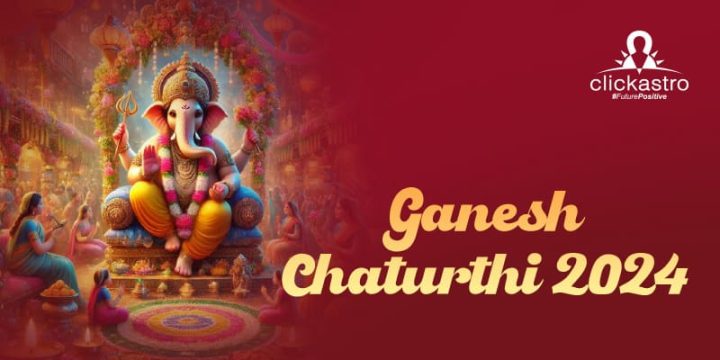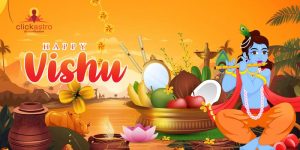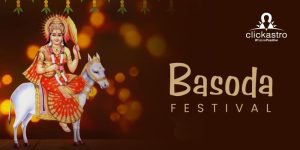Ganesh Chaturthi
Let’s Celebrate Ganpati Bappa’s Janamdin!
“Ganpati Bappa Morya! Mangalmoorti Morya! Pudchya varshi lavkar yaMorya Re Bappa Morya Re”
Have you come across these chants with long processions holding Lord Ganesha’s idols? It’s that time of the year now when households welcome Lord Ganesha into their homes and hearths with great fervour. Magnificently decorated Lord Ganesha’s idols big and small are mounted on vehicles or carried with chats welcoming the Lord to grace their homes. This is also the time when festivities will commence. Ganesh Chaturthi is the precursor to various festivals and events that will soon follow through the year. As we start any mangal karma by paying our obeisance to Lord Ganpati or Ganesha to remove obstacles and bring in success.
Ganesh Chaturthi, also referred to as Vinayaka Chaturthi, is a traditional Vedic festival celebrating Lord Ganesh’s birth (Vinayaka). The fourth lunar phase is referred to as
Chaturthi or Chaturthi Tithi. The Chaturthi Tithi in the
Shukla Paksha (waxing phase / bright fortnight) pertains to Lord Ganesh, the god of wisdom and success, according to Vedic culture. In general, all Shukla Paksha Chaturthi celebrations are dedicated to Lord Ganesh, with the one in the month of Bhadrapada being the most important. Devotees commemorate this day as Lord Ganesh’s birthday.
When is Ganesh Chaturthi 2024?
The Ganesh Chaturthi 2024 will be celebrated on Saturday, September 7, 2024.
Ganesh Visarjan or
Ananth Chaturdashi on Tuesday, September 17, 2024.
Auspicious timings for Ganesh Chaturthi
- Chaturthi Tithi Commences September 6, 2024, at 3:01 PM
- Chaturthi Tithi Concludes September 7, 2024, at 5:37 PM
- Madhyana Ganesh Puja Muhurat From 11:10 AM to 01:38 PM on September 7, 2024
Duration 02 Hours 28 Mins
- Ganesh Visarjan on Thursday, September 17, 2024
- Avoid Moon Sighting September 7, 2024, From 9:29 AM to 08:57 PM
Duration 11 Hours 28 Min
-
Ganesh Chaturthi – The Birthday of Lord Ganesh
During every lunar month, the Shukla Paksha Chaturthi (4th lunar phase in the waxing phase) is dedicated to Lord Ganesh and celebrated as his monthly birthday. Vinayaka Chaturthi is celebrated on these days. The most important is the Shukla Paksha Chaturthi in the Bhadrapada month (6th lunar month) of the Vedic lunisolar calendar, which is celebrated as Lord Ganesh’s annual birthday. The actual Ganesh Chaturthi is celebrated on this day with great pomp and devotion. This day falls in late August or early September on the
Gregorian calendar, depending on the moon’s cycle.
Lord Ganesh is among the most revered gods in Vedic culture. Since Lord Ganesh is considered the god of wisdom, good fortune, and success, his birthday is extremely important to his devotees. Devotees all over the world celebrate Shukla Paksha Chaturthi in the Bhadrapada month as Ganesh Chaturthi – Lord Ganesh’s birthday.
Ganesh Chaturthi is a community festival that is celebrated with great passion and fervour in Maharashtra and Goa. The festival lasts for 10 days, beginning on Shukla Paksha Chaturthi (4th lunar day) and ending on Shukla Paksha Chaturdashi (14th lunar day) also known as Ananth Chaturdashi with the immersion of idols of Lord Ganesha marking the end to the festivities.
The general elements or rites of this festival include
On the first day of Chaturthi, people observe Vrat (fasting).
Large clay idols of Lord Ganesh are installed in homes and pandals set up in public places.
Daily pujas are conducted, offerings (prasad) are prepared and distributed, and devotees also chant the Ganapati Upanishad
Ganesh Visarjan – a ceremonial procession in which the idols of Lord Ganesh are carried and immersed in a river or sea. This ritual takes place on the last day of the Ganesh Chaturthi festival (Shukla Paksha Chaturdashi, also known as Anant Chaturdashi), and it is the most spectacular of the festival. The air is filled with chants of Ganpati Bappa Morya Pudchya Varshi Lavkar ya (meaning Lord Ganpati we pray to you and request you to arrive again soon next year and shower your blessings upon us).
The Legend Behind Ganesh’s Birth
The most popular legend surrounding Lord Ganesh’s birth is that Lord Ganesha was created by Goddess Parvati’s using clay which she sculpted into the shape of a boy before she went for a bath. The goddess then told him to stand guard at her door until she finished her bath. Little Ganesh, following his mother’s orders, stood guard firmly at the door, refusing to let Lord Shiva in. As a result, the two got into a fight, both unaware of who they were fighting with. Finally, an enraged Shiva beheaded Ganesh with his Trishul. Seeing her son being killed, Goddess Parvathi became enraged and urged Lord Shiva to bring back her son. Lord Shiva promised to resurrect Ganesh.
He directed his Ganas and devas to find a head, but they could only find an elephant’s head. Finally, Lord Shiva restored Ganesh’s life with the elephant head. As a result, Lord Ganesh came to be known as the elephant-headed god known as Gajanan (‘Gaja’ means elephant and ‘anan’ means face/head).
According to another legend, Lord Ganesh was created by Shiva and Parvati following the plea of the devas. Lord Ganesh was born to be the Vighnakartaa (creator of obstacles) to the Rakshasas (demons) and the Vighnaharta (averter of obstacles) to the Devas (deities)
Importance of Lord Ganesh
Ganesh, also known as Ganesha, is one of the most revered deities in Vedic culture. He is considered Shiva and Parvati’s son and the leader of the Ganas (Shiva’s tribe). He is the god of wisdom, intelligence, and good fortune for devotees all over the world. He is popularly known as the elephant-headed god. Lord Ganesh is also known as Vinayaka, Ganapati (meaning “the leader of the ganas” or “the guardian of multitudes”), Gajanan (the elephant-faced one), Vighneswara (the remover of obstacles), and Buddhi Pradaayaka (the one who bestows intelligence).
Lord Ganesh as Vignaharta – the one who removes obstacles
Because Lord Ganesh is revered as the eradicator of obstacles and the god of good fortune, devotees often worship or pay reverence to him before beginning anything auspicious. People seek his blessings at the start of auspicious functions such as marriage and
Graha Pravesh (housewarming), as well as when starting new ventures such as a business, project, or long journey. His blessings are believed to remove obstacles and make the efforts easier and more successful. His blessings are also requested at the start of all temple ceremonies and religious rituals.
Mention in Ancient texts
The term Ganapati has been mentioned in the Rig Veda. It is, however, unclear whether ‘the Ganapati in the Vedas’ and the later era Ganesha are the same. This name appears in a number of post-Vedic texts, including the Grhya Sutras, Vajasaneyi Samhita, and Yajnavalkya Smriti. Skanda Purana, Narada Purana, and Brahma Vaivarta Purana all praise him as the god of success and remover of obstacles. Lord Ganapati has been referred to as Ganesvara and Vinayaka in the
Mahabharata.
Ganesh Chaturthi Rituals & Celebrations
Though the festival of Ganesh Chaturthi is observed all over India and by devotees around the world, it is celebrated with great energy and pomp in the Indian state of Maharashtra. It is also widely celebrated in Goa, Karnataka, Telangana, Andhra Pradesh, and Tamil Nadu.
Ganesh Chaturthi celebrations can last anywhere from one to eleven days, depending on regional traditions. In Maharashtra and Goa, the festival lasts 10 or 11 days, beginning on Shukla Paksha Chaturthi (4th lunar day) of the Bhadrapada month and ending on Chaturdashi day (14th lunar day). On Shukla Paksha Chaturthi, Ganesha idols are mounted on raised platforms in homes and elaborately decorated pandals (outdoor tents).
In Maharashtra and Goa, erecting pandals and installing intricately and beautifully crafted Ganesha idols is a common practice. Idols of a range of styles and sizes are used, and the artisans usually take months to complete them. This festival is commonly observed by installing idols, chanting hymns from Hindu texts such as the Ganapati Upanishad, observing vrat, preparing prasad, performing aarti, and so on.
The installation of Ganesha idols is a significant part of the festival, which also involves some significant religious rituals. After the idols have been set up, the Prana Prathishta ritual is performed to instill life or the holy presence of the Lord in the idols. It may include some worship and mantra recitation. Following that the Shodashopachara, or the 16 ways to pay tribute is then performed.
On each day of the festival, prayers are offered to the installed deities. The deities are worshipped by chanting Vedic hymns and the Ganesh Upanishad, and they are anointed with red sandalwood paste and flowers. Coconut, jaggery, rice, coins, Modaks (Lord Ganesh’s favourite food), and other sweets are also offered by devotees. This festival’s most popular activities include visiting the various public displays of Lord Ganesh and worshipping him. On these days, Lord Ganesh temples hold special prayers and programmes.
Ganesh Visarjan
Ganesh Chaturthi is a ten or eleven-day festival that comes to a head with the Ganesh Visarjan ritual on Anant Chaturdashi (the last day). On this day, all installed Ganesha idols are paraded through the streets to the accompaniment of music and dance before being immersed in a body of water such as a river or sea. This is the Ganesh Visarjan ritual, which represents the Lord’s return to Mount Kailash, the abode of Shiva and Parvati.
Some people may perform this ritual prior to Anant Chaturdashi. It will, however, be observed only on odd days, such as one and a half, three, five, and seven days after Ganesh Chaturthi.
Mumbai is the best location to see and experience the Ganesh Chaturthi festival’s gala. Over 10,000 statues of Lord Ganesh will be erected throughout the city. The celebrations are held in a unique manner at the Siddhivinayak temple in the Prabhadevi neighbourhood of central south Mumbai. During the occasion, an uncountable number of devotees visit this temple for prayers. The final day’s Ganesh Visarjan ritual encompasses a grand, vibrant procession that is a must-see. Every year, over 150,000 statues are immersed in Mumbai alone!
The Significance of Ganesh Visarjan Ritual
The immersion of idols or deities worshipped as gods into bodies of water is an example of an important thought or principle. It acknowledges the universe’s constant state of change. All forms eventually become formless, leaving only energy. The immersion of Ganesha idols in the sea, followed by their destruction, serves as a reminder of this fact. It aims to teach us that everything is fleeting and that we must sometimes let go of the things we cherish.
The Forbidden Moon
It is forbidden to look at the moon on Ganesh Chaturthi. On Ganesh Chaturthi, it is believed that anyone who sees the moon will be cursed with Mithya Dosham or Mithya Kalank, which implies false accusation of theft (‘Mithya’ means false). According to legend, this is because the moon laughed at Lord Ganesha after he fell from his vehicle, the rat. According to legend, Lord Krishna was accused of stealing a valuable jewel because he saw the moon on Bhadrapad Shukla Paksha Chaturthi (Ganesh Chaturthi).
The history behind Sarvajanik Ganesh Chaturthi
Since the 17th century, during the reign of Shivaji (1630 – 1680), the Ganesh Chaturthi festival has been celebrated as a communal festival in Pune. It may have been celebrated earlier, but the exact origin is unknown. After the Mughal-Maratha wars, King Shivaji, the founder of the Maratha Empire, made it a major public event.
Later during the 19th century, the British Raj prohibited Hindu gatherings through the anti-public assembly legislation enacted in 1892. As a result, Ganesh Chaturthi festivities became more of a private family affair. There are some disagreements about who revived the Ganesh Utsav celebrations. It is said that Lokmanya Tilak, Bhausaheb Rangari, and Sardar Krishnaji Khasgiwale were all known to have worked hard to resurrect this festival. Whoever it was, the goal of reviving the celebrations was to bring people of all social classes together. It brought them together and united them in their opposition to British rule. Because Lord Ganesh was worshipped by all classes and castes, Ganesh Utsav celebrations aided in bridging the caste hierarchy’s gap between the upper and lower classes. It instilled an intense sense of heritage in them and brought them together emotionally in their opposition to the British government.









thanks for share diwali post…
astroindusoot.com